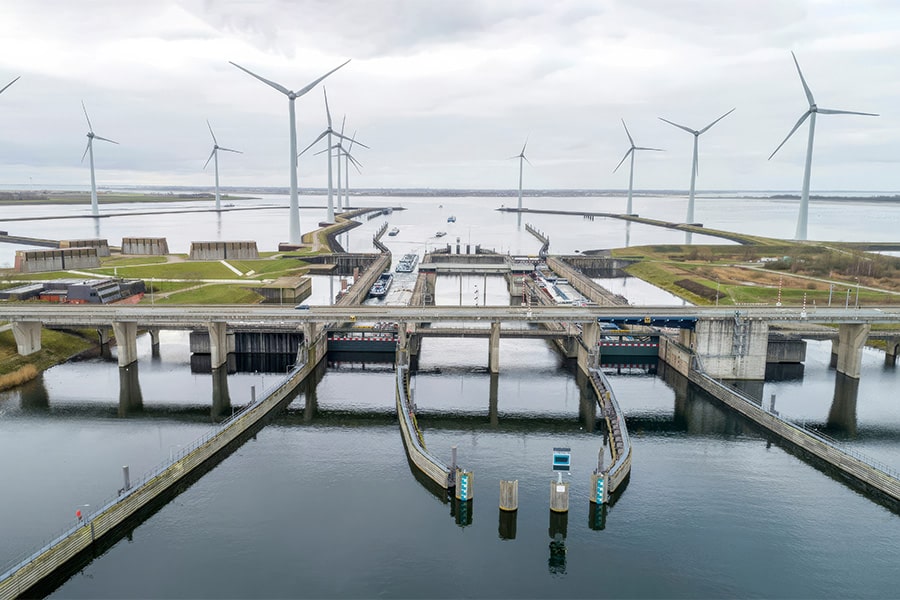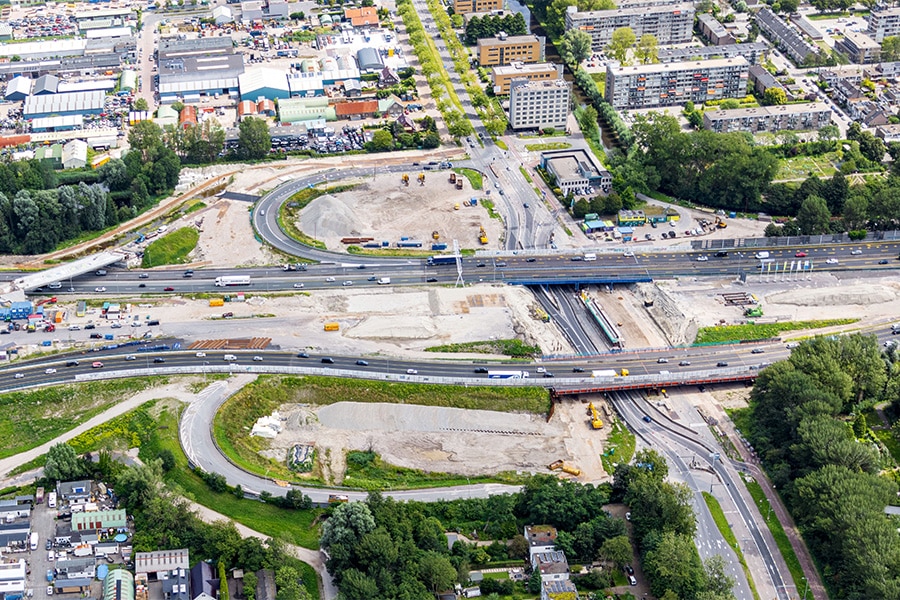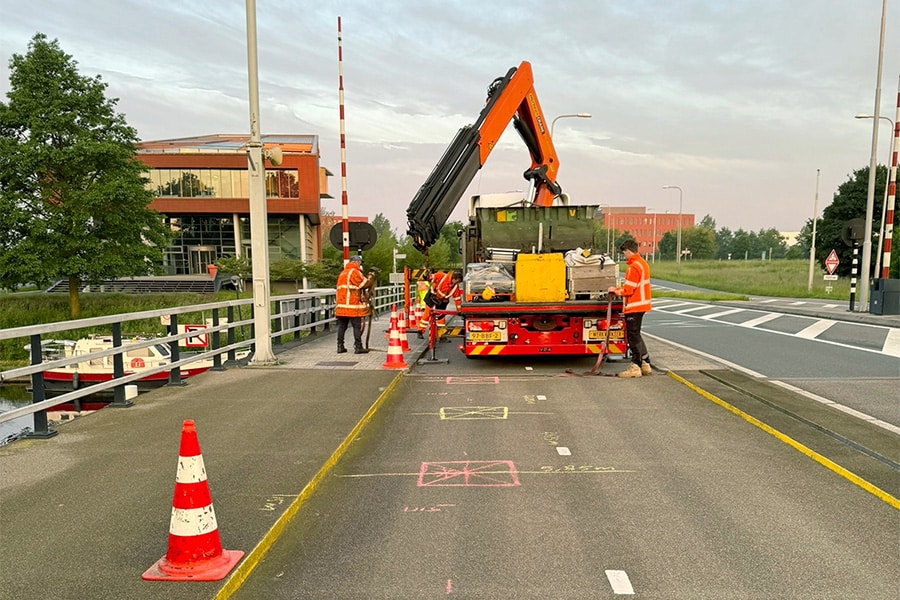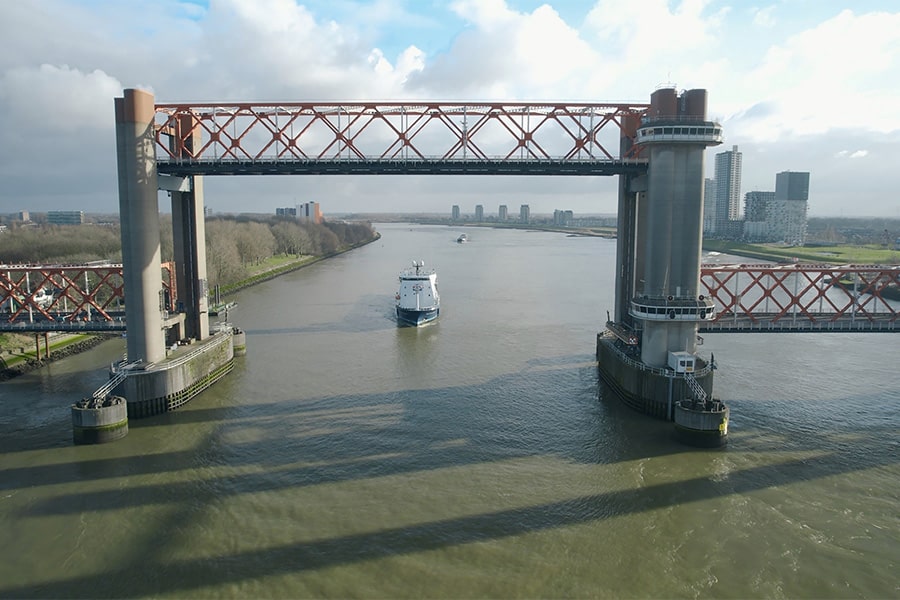
The final piece
If the Rhineland's management area is to remain safe and healthy in the future, up to several meters below sea level, the storage basin system must function properly. Around the turn of the century an extensive study was conducted into the functioning and future-proofing of the Rhineland storage basin. It showed that additional drainage and storage capacity was needed to keep the storage basin robust in the future. Reason enough for the Rhineland Water Board to intervene. Three measures emerged from the study to bring the storage basin system back to the desired level. Peak storage Haarlemmermeer forms the final piece.

As a result of climate change, we are experiencing increasingly heavy and prolonged rainfall. So that means a lot of flooding in a short period of time. "We live in the Rhineland region largely below sea level and must ensure that the surplus water can be collected and then pumped away," says Jos de Wilde, environmental manager from Hoogheemraadschap van Rijnland. "From our polders we pump the water into the storage basin system, an interconnected network of waterways in the area, from where the water is pumped with storage basin pumping stations to the outside water: the North Sea, Hollandse IJssel and the North Sea Canal. Flooding occurs when the water cannot flow fast enough to these polder pumping stations or when they reach their limits and can no longer cope with the enormous amount of water. Then the storage basin is at risk and cities such as Leiden and Haarlem, for example, can be inconvenienced, but also the entire bulb-growing area can literally be flooded."

Pressure relief valve
To restore the storage basin system to the desired level, the Rhineland Water Board is investing in three projects. Two of them have already been implemented. "For example, the capacity of the Katwijk pumping station has been substantially increased to about 100 m3 per second," says Lodewijk Biemond, project manager at Hoogheemraadschap van Rijnland. "In addition, we have constructed Peak Storage De Nieuwe Driemanspolder near Zoetermeer, good for a temporary buffer of 2 million cubic meters of water. And now the final touches are being made to Peak Storage Haarlemmermeer with a capacity of 1 million cubic meters of water. With these measures we are relieving the storage basin system." Think of both peak storages as a kind of overpressure valve in our system to ensure that excess water can be regulated and temporarily stored, De Wilde adds. "The urgency and usefulness and need has only increased in recent years due to climate change, and it's not expected to stop. We see that extreme situations are already occurring now that were not expected according to models until much later. Anyway, based on the latest models and climate scenarios from KNMI, the expectation is that we will deploy peak storage once every 15 years."

Closed soil balance
After changing the zoning plan many years ago, the Rijnland Water Board had already purchased the land for Peak Storage Haarlemmermeer at the time. "In that sense, the location and contours of peak storage were already clear," Biemond says. "In the run-up to the project, we also determined the requirements. For example, the disposal must be able to fill up in 24 hours and be emptied again in five days. Furthermore, we gave the combination certain freedom in the design in order to make good use of knowledge from the market."
Peak storage Haarlemmermeer operates entirely under natural decay. No pumps are needed to deploy or drain the peak storage. De Wilde: "With EMVI, we put quite a bit of emphasis on sustainability and CO2-reduction. The contractor chose to make the work with a closed soil balance. The entire area was double and cross-checked by the contractor in order to distribute the soil among the dyke sections. As a result, there has been virtually no transportation of soil on public roads."
Work is progressing. "I think all parties are proud to contribute to this project," notes De Wilde. "The atmosphere there is pleasant and there is also a lot of interest and positive feedback from the surrounding area. Kudos to the combination on how they are involving local residents in the project. But also outside the immediate area there is a lot of attention for the project. We regularly organize tours and excursions, because this project makes visible in a nutshell the function of the Rhineland Water Board and the impact of climate change on life below sea level." For this reason, Peak Storage Haarlemmermeer was also recently in the spotlight during the thirteenth National Delta Congress.



